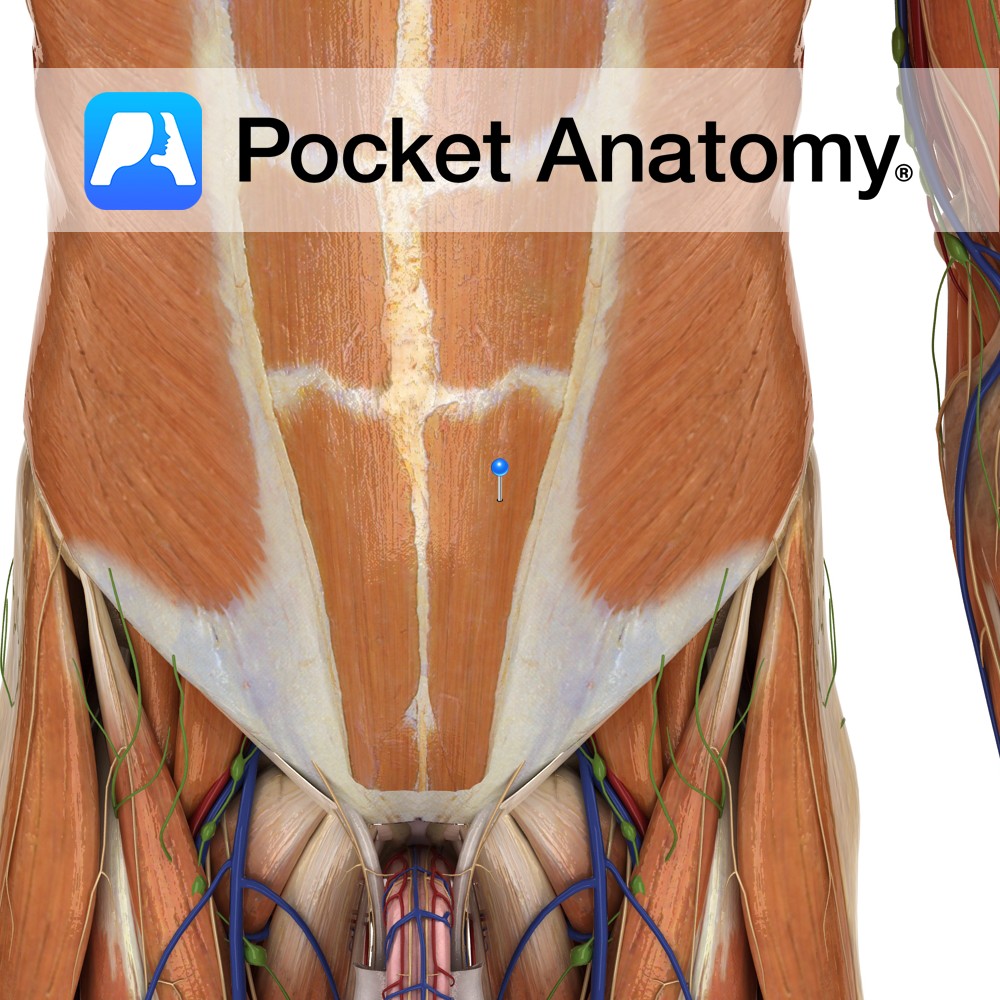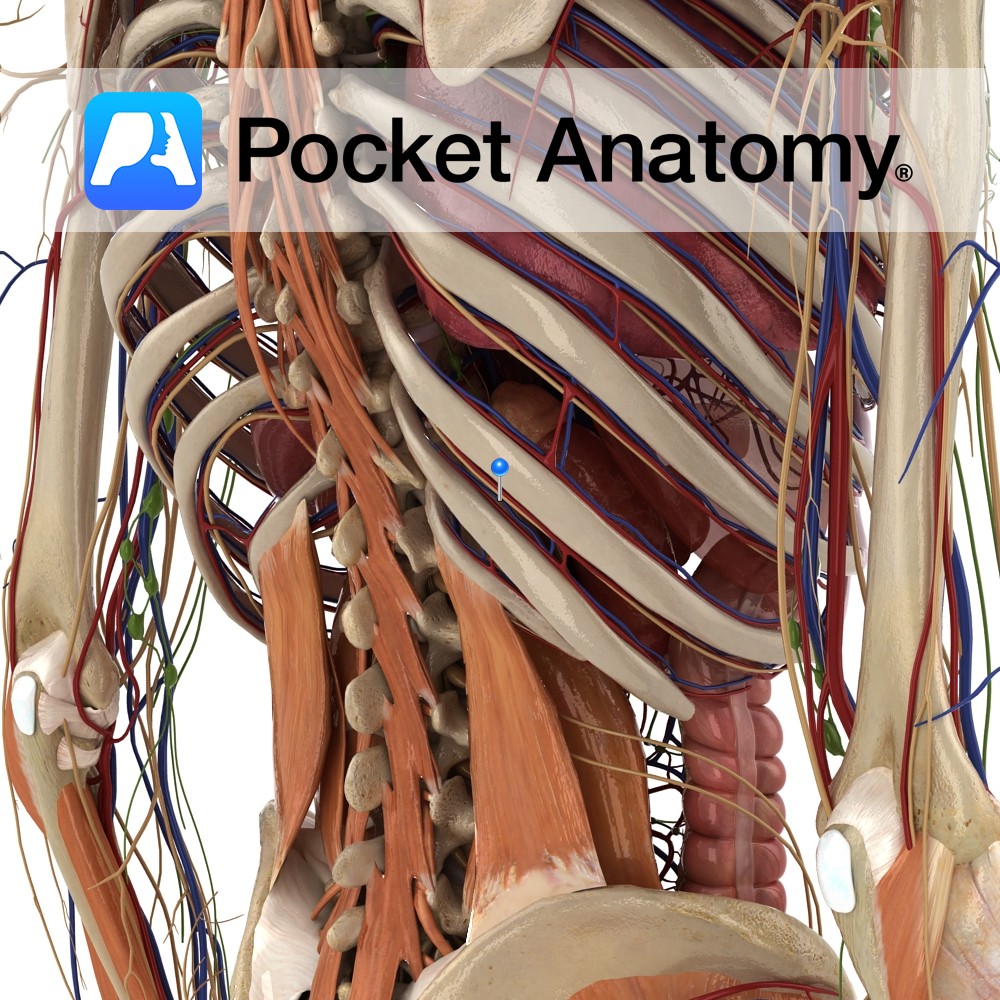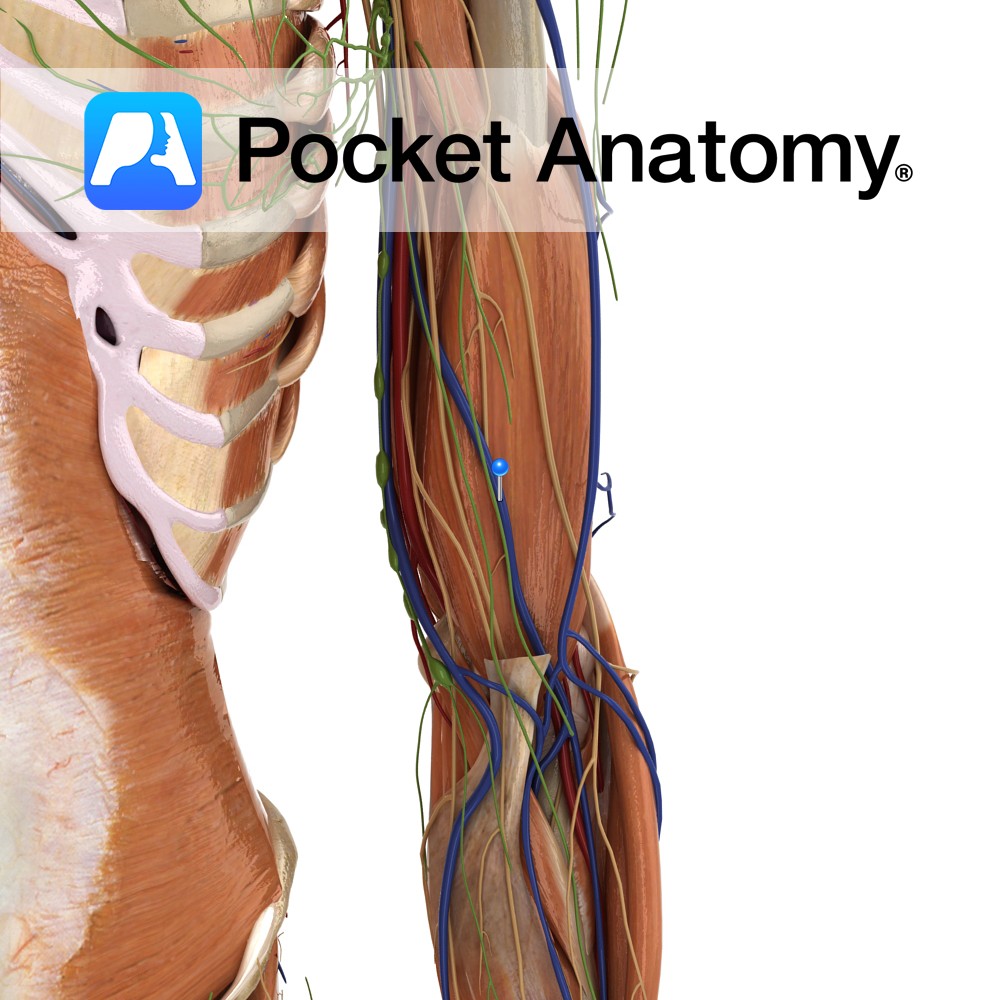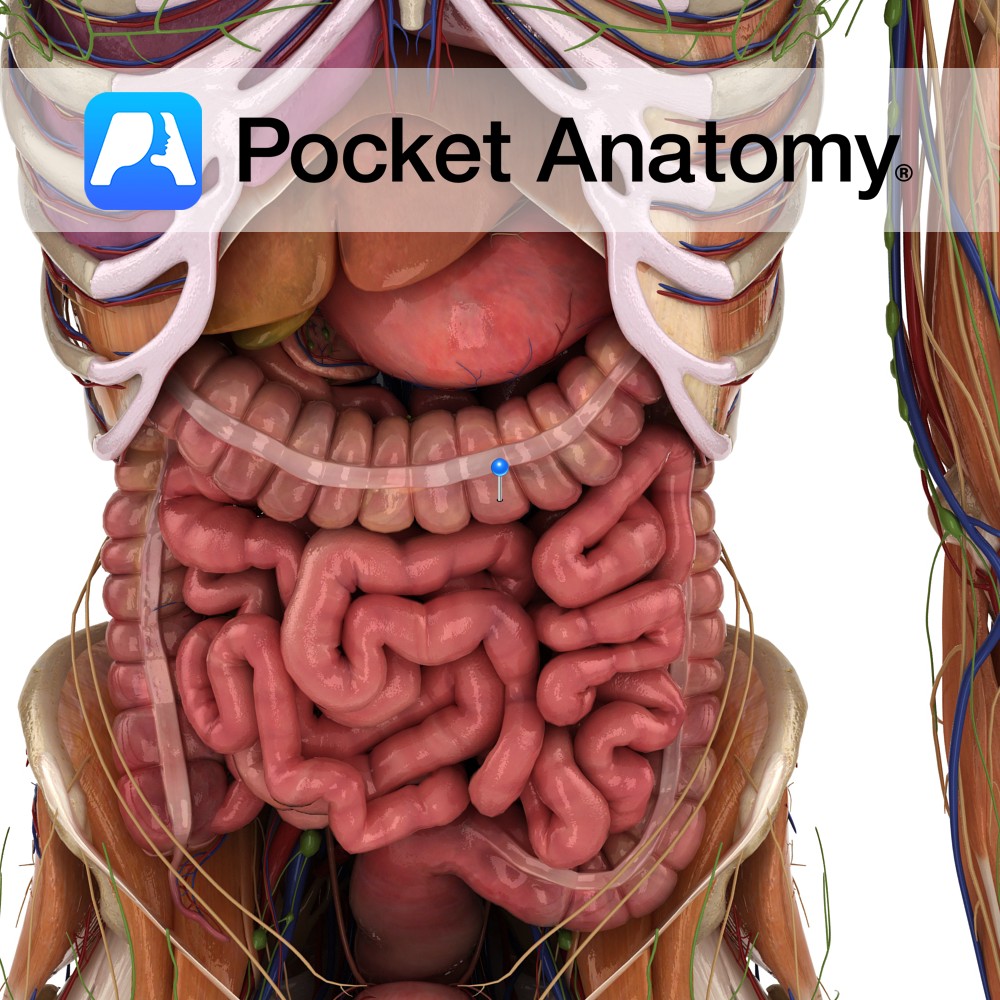Anatomy
Origin:
Pubic crest, pubic tubercle and pubic symphysis.
Insertion:
Xiphoid process and lower costal cartilages (of 5th to 7th ribs).
Key relations:
Contained within the rectus sheath and separated from the rectus abdominis muscle on the opposite side by the linea alba.
Functions
-Compresses abdominal cavity.
-Tenses abdominal wall.
-Flexes vertebral column (trunk) e.g. moving from lying to sitting.
-Postural muscle.
-Depresses ribs i.e.an accessory muscle of respiration.
Supply
Nerve Supply:
Anterior rami of thoracic spinal nerves (T7 to T12).
Blood Supply:
-Inferior epigastric artery
-Superior epigastric artery.
Clinical
The muscle belly is transected by several (normally three) tendinous intersections along its course. When the muscle is well developed the tendinous intersections give rise to the appearance of the abdominal ‘six pack’.
Interested in taking our award-winning Pocket Anatomy app for a test drive?





